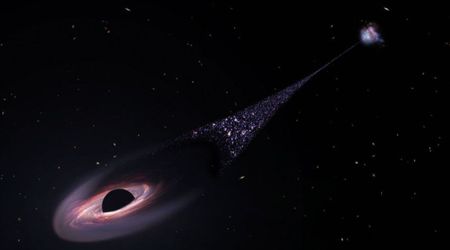NASA's James Webb unveils the mystery of the Milky Way's most common planets

Astronomers have found the secrets behind the mysterious sub-Neptunes, the most common kind of exoplanet in our galaxy. They don’t revolve around the sun but are gassy planets with hazy shrouds, according to NASA. Scientists are now studying the exoplanet TOI-421 b with the observations from NASA’s James Webb Space Telescope. It was first discovered by NASA's Kepler space telescope, but the atmospheres of sub-Neptunes were deemed impossible to probe. This study can help understand the existence, formation, and evolution of sub-Neptunes in space.

“I had been waiting my entire career for Webb so that we could meaningfully characterize the atmospheres of these smaller planets,” stated principal investigator Eliza Kempton of the University of Maryland, College Park, to Newsweek. “By studying their atmospheres, we’re getting a better understanding of how sub-Neptunes formed and evolved, and part of that is understanding why they don't exist in our solar system,” they added. TOI-421 b is around 245 light-years away in the Lepus constellation to the south of Orion, and has a temperature of 1,340 degrees Fahrenheit.
Latest UY | World
— UnreadWhy (@TheUnreadWhy) May 6, 2025
Unveiling the Secrets of Sub-Neptunes with NASA’s Webb Telescope!
NASA’s James Webb Telescope has peeled back the cosmic curtain on TOI-421 b, a scorching sub-Neptune exoplanet. Unlike its hazy cousins, this planet’s clear atmosphere revealed water vapor,… pic.twitter.com/2u4AkRe1fB
Sub-Neptunes are larger than Earth, but smaller than gas planets such as Jupiter, as per NASA. It was observed prior to Webb that sub-Neptune atmospheres had flat or featureless transmission spectra. This meant that the chemical fingerprints of its spectral features were invisible or undetectable, which indicated cloud obscuration. “Why did we observe this planet, TOI-421 b? It's because we thought that maybe it wouldn't have hazes,” said Kempton, as per Newsweek. This was attested by previous data of varied temperatures showing varied clouds.

Beneath a certain range of temperature, photochemical reactions are believed to occur between sunlight and methane gas that creates the haze. This mark is at about 1,070 degrees Fahrenheit, way below the temperature of TOI-421 b. Hotter planets are not supposed to have methane and so the haze would not be triggered. Brian Davenport, a third-year Ph.D. student from the University of Maryland, executed the primary data analysis. "We saw spectral features that we attribute to various gases, and that allowed us to determine the composition of the atmosphere," he said.

The atmosphere had water vapors and tentative signatures of carbon monoxide and sulfur dioxide. Methane and carbon dioxide molecules were not detected, as per NASA. There was also a huge amount of hydrogen in the exoplanet’s atmosphere. This light atmosphere was different from the previous heavy-molecule sub-Neptunes, which indicated that TOI-421 b formed and evolved differently. Brian Davenport and Eliza Kempton published the findings of their study and the sub-Neptunes observations of the James Webb in The Astrophysical Journal Letters.
The #JWST has provided new insights into sub-Neptune exoplanets by observing TOI-421 b, a planet ~ 244 light-years away in the constellation Lepus. Sub-Neptunes are the most common type of exoplanet in our galaxy but remain poorly understood, partly due to their typically hazy… pic.twitter.com/xIovS7VhtM
— Erika (@ExploreCosmos_) May 6, 2025
“We've unlocked a new way to look at these sub-Neptunes,” said Davenport. “These high-temperature planets are amenable to characterization. So by looking at sub-Neptunes of this temperature, we're perhaps more likely to accelerate our ability to learn about these planets,” he added, as per Universe Today. TOI-421b orbits a sun-like star, contrary to many other sub-Neptunes that orbit smaller red dwarf stars.









